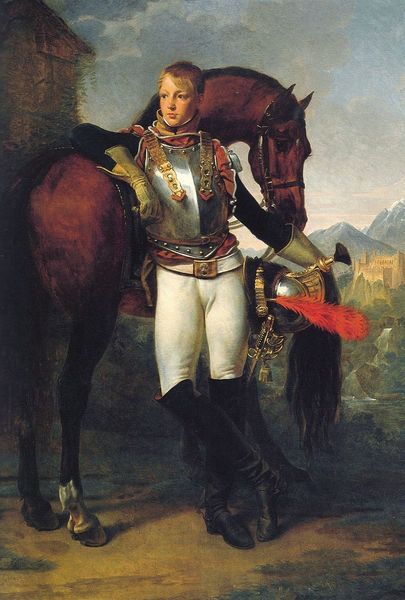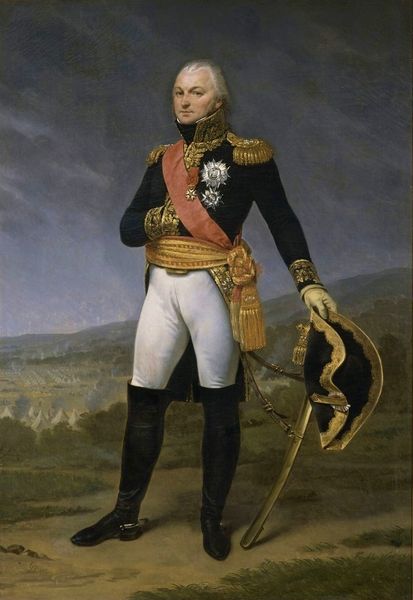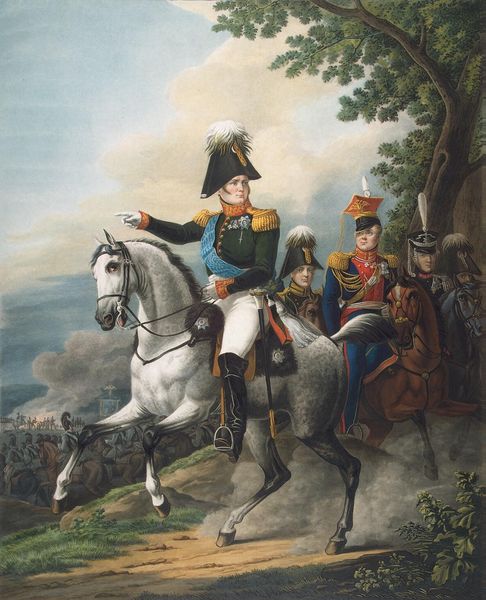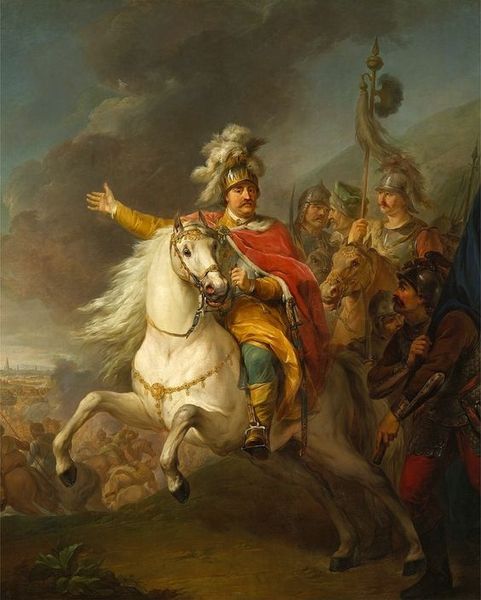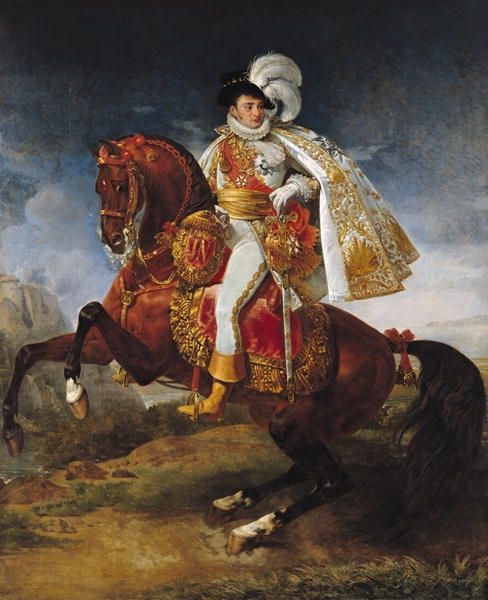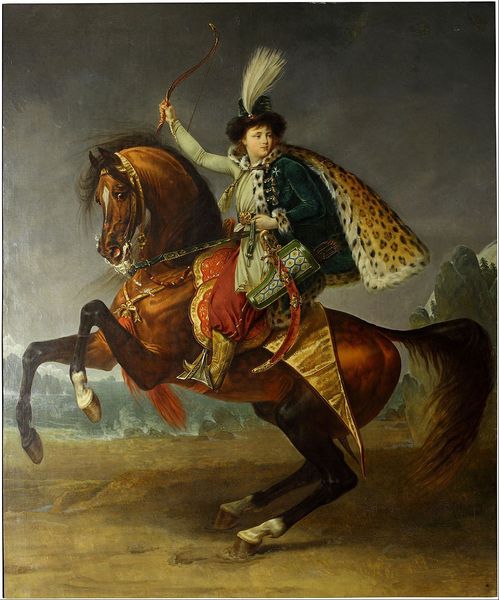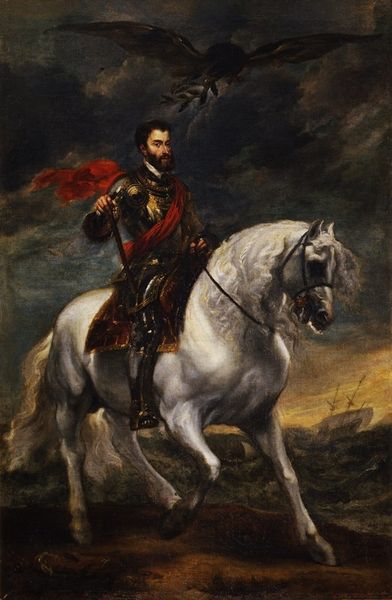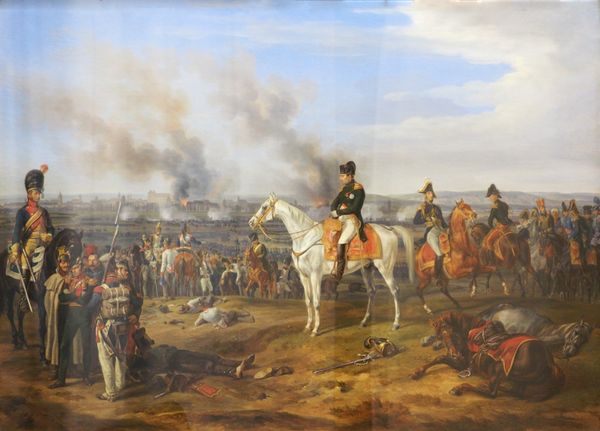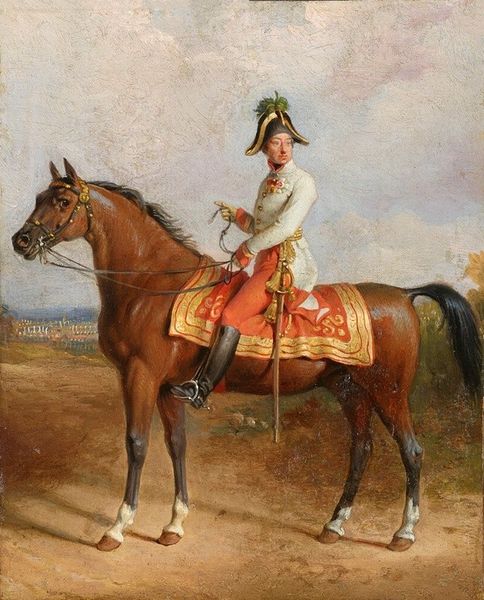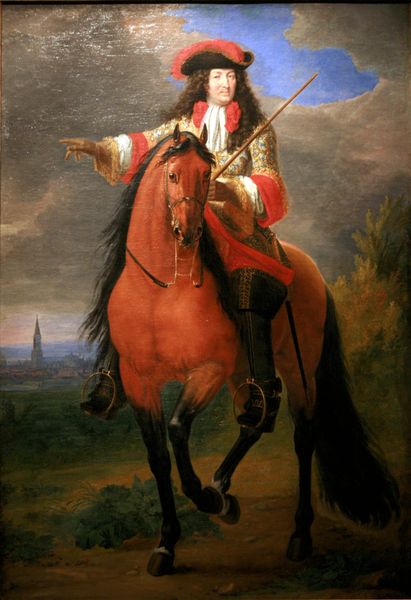
photography
#
possibly oil pastel
#
photography
#
oil painting
#
acrylic on canvas
#
animal portrait
#
naive art
#
horse
#
surrealism
#
painting painterly
#
animal drawing portrait
#
surrealist
#
watercolor
Copyright: Public domain
Curator: Today we're looking at Albrecht Adam's "King Wilhelm I on Horseback," painted in 1829. What are your first thoughts? Editor: The immediate impression is one of idealized power. The subject exudes authority, the white horse radiates purity and strength. However, the leopard print saddle blanket adds a touch of unexpected exoticism—almost bordering on the subversive. Curator: I’m drawn to the composition. Note how Adam uses a somewhat high vantage point, combined with the low horizon, to grant prominence to the figure of the king and his steed. How this strategic device isolates Wilhelm and allows our eyes to be completely fixed on the subject’s expression of calm determination. The muted background further accentuates the focal points: Wilhelm and his horse. Editor: And notice how the artist positions the king. He's set against the backdrop of his troops. This symbol serves not just to portray him, but to emphasize his role as leader of Prussia’s forces, evoking associations with military triumphs, and ideas of dominance in that period. The plume adds to the theatrics, to that symbolic regalia. Curator: The painterly technique adds dynamism. While realistic in its portrayal, Adam’s handling of paint isn’t overly polished, particularly in the landscape and the troops arrayed behind Wilhelm, creating a lively energy across the pictorial surface. Editor: Absolutely. Horses and horseback riding has persisted as a royal status symbol across cultures, embodying notions of control, mastery and a legacy of empire, here given an added boost via the animal’s association with ideas of courage, honor and aristocratic privilege. This painting is a prime example of how those themes come together visually. Curator: Ultimately, Adam crafts an image intended to inspire reverence for Wilhelm. A sophisticated manipulation of visual language at the service of power, it provides fertile ground for any analysis of representational structure and courtly politics. Editor: Yes, I agree. In this one image, Adam encapsulated both personal strength and collective identity. The artwork showcases how powerful symbols can create lasting associations of leadership, prestige, and even, perhaps, national pride.
Comments
No comments
Be the first to comment and join the conversation on the ultimate creative platform.
